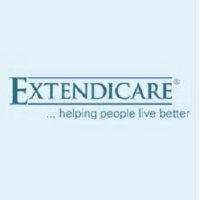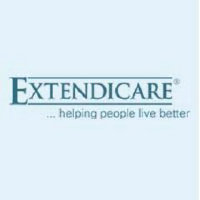
Extendicare Inc
TSX:EXE


| US |

|
Johnson & Johnson
NYSE:JNJ
|
Pharmaceuticals
|
| US |

|
Berkshire Hathaway Inc
NYSE:BRK.A
|
Financial Services
|
| US |

|
Bank of America Corp
NYSE:BAC
|
Banking
|
| US |

|
Mastercard Inc
NYSE:MA
|
Technology
|
| US |

|
UnitedHealth Group Inc
NYSE:UNH
|
Health Care
|
| US |

|
Exxon Mobil Corp
NYSE:XOM
|
Energy
|
| US |

|
Pfizer Inc
NYSE:PFE
|
Pharmaceuticals
|
| US |

|
Palantir Technologies Inc
NYSE:PLTR
|
Technology
|
| US |

|
Nike Inc
NYSE:NKE
|
Textiles, Apparel & Luxury Goods
|
| US |

|
Visa Inc
NYSE:V
|
Technology
|
| CN |

|
Alibaba Group Holding Ltd
NYSE:BABA
|
Retail
|
| US |

|
JPMorgan Chase & Co
NYSE:JPM
|
Banking
|
| US |

|
Coca-Cola Co
NYSE:KO
|
Beverages
|
| US |

|
Walmart Inc
NYSE:WMT
|
Retail
|
| US |

|
Verizon Communications Inc
NYSE:VZ
|
Telecommunication
|
| US |

|
Chevron Corp
NYSE:CVX
|
Energy
|
Utilize notes to systematically review your investment decisions. By reflecting on past outcomes, you can discern effective strategies and identify those that underperformed. This continuous feedback loop enables you to adapt and refine your approach, optimizing for future success.
Each note serves as a learning point, offering insights into your decision-making processes. Over time, you'll accumulate a personalized database of knowledge, enhancing your ability to make informed decisions quickly and effectively.
With a comprehensive record of your investment history at your fingertips, you can compare current opportunities against past experiences. This not only bolsters your confidence but also ensures that each decision is grounded in a well-documented rationale.
Do you really want to delete this note?
This action cannot be undone.

| 52 Week Range |
10.02
22.98
|
| Price Target |
|
We'll email you a reminder when the closing price reaches CAD.
Choose the stock you wish to monitor with a price alert.

|
Johnson & Johnson
NYSE:JNJ
|
US |

|
Berkshire Hathaway Inc
NYSE:BRK.A
|
US |

|
Bank of America Corp
NYSE:BAC
|
US |

|
Mastercard Inc
NYSE:MA
|
US |

|
UnitedHealth Group Inc
NYSE:UNH
|
US |

|
Exxon Mobil Corp
NYSE:XOM
|
US |

|
Pfizer Inc
NYSE:PFE
|
US |

|
Palantir Technologies Inc
NYSE:PLTR
|
US |

|
Nike Inc
NYSE:NKE
|
US |

|
Visa Inc
NYSE:V
|
US |

|
Alibaba Group Holding Ltd
NYSE:BABA
|
CN |

|
JPMorgan Chase & Co
NYSE:JPM
|
US |

|
Coca-Cola Co
NYSE:KO
|
US |

|
Walmart Inc
NYSE:WMT
|
US |

|
Verizon Communications Inc
NYSE:VZ
|
US |

|
Chevron Corp
NYSE:CVX
|
US |
This alert will be permanently deleted.
Extendicare Inc
Extendicare, Inc. is a holding company, which engages in the provision of nursing care, home health care, retirement living, and management and consulting services. The company is headquartered in Markham, Ontario. The firm's segments include long-term care, retirement living, home health care, and contract services, consulting and group purchasing as other operations. The company owns and operates 58 long-term care homes with a capacity for 8,138 residents. Under the Esprit Lifestyle Communities brand, it owns and operates approximately 11 retirement communities with 1,050 suites. Through its wholly owned subsidiary ParaMed, its home health care operations provide complex nursing care, occupational, physical and speech therapy, and assistance with daily activities to accommodate those living at home. Through its Extendicare Assist division, it provides contract services and consulting to third parties. Through its SGP Purchasing Partner Network division, it offers purchasing contracts to other senior care providers for food, capital equipment, furnishings, cleaning and nursing supplies, and office products.

Extendicare, Inc. is a holding company, which engages in the provision of nursing care, home health care, retirement living, and management and consulting services. The company is headquartered in Markham, Ontario. The firm's segments include long-term care, retirement living, home health care, and contract services, consulting and group purchasing as other operations. The company owns and operates 58 long-term care homes with a capacity for 8,138 residents. Under the Esprit Lifestyle Communities brand, it owns and operates approximately 11 retirement communities with 1,050 suites. Through its wholly owned subsidiary ParaMed, its home health care operations provide complex nursing care, occupational, physical and speech therapy, and assistance with daily activities to accommodate those living at home. Through its Extendicare Assist division, it provides contract services and consulting to third parties. Through its SGP Purchasing Partner Network division, it offers purchasing contracts to other senior care providers for food, capital equipment, furnishings, cleaning and nursing supplies, and office products.
Strong Quarter: Extendicare delivered its strongest performance in years, with revenue and EBITDA growth driven by both acquisitions and strong organic demand, particularly in Home health care.
Home Health Growth: Home health care volumes at ParaMed grew 13% year-over-year, the highest organic growth to date, mainly due to increased demand from an aging population and long-term care (LTC) capacity constraints.
Accretive Acquisitions: The acquisition of Closing the Gap added $24 million in revenue and $3.1 million in NOI in Q3, exceeding initial expectations and supporting future margin improvements.
Margin Expansion: Company-wide margin improvements were noted, with Home health care NOI margin up 230 basis points to 13.6% and LTC NOI margin up 40 basis points.
Redevelopment Progress: Six LTC homes under construction will add over 1,400 beds, funded via a joint venture, with further projects advancing, aiming to replace older facilities and expand capacity.
Liquidity & Balance Sheet: Extendicare ended the quarter with $166 million cash and $154 million available under its revolving credit facility, maintaining solid credit metrics and no debt maturities until 2027.
Outlook: Management sees continued strong demand from demographic trends, expects to pursue further acquisitions, and remains focused on capital-efficient growth while navigating a constrained LTC market.































